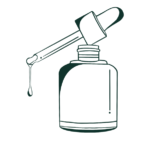Chemical Peel Treatment in Plano, Texas
Redefine your beauty
Get smooth and younger looking skin with chemical Peel
How does it work?
To prepare you for a chemical peel, your doctor will probably:
Examine your medical background: Be ready to discuss any recent or current medical conditions, prescription medications, cosmetic procedures, and current or previous medical conditions.
Perform a physical examination: Your doctor will examine your skin and the area that needs to be treated to decide which type of peel you might benefit from the most and how your physical characteristics, such as the tone and thickness of your skin, may affect your results.
Confront your expectations: Discuss your goals, expectations, and risks with your doctor. Make sure you are aware of your potential treatment requirements, healing time, and potential outcomes.
You may also need to:
- Use an antiviral medication: Before and after treatment, your doctor may advise taking an antiviral medication to help prevent a viral infection.
- Apply retinoid cream: For a few weeks before treatment, your doctor may advise using a retinoid cream to aid healing, such as tretinoin (Renova, Retin-A).
- Use a bleaching substance: To lower the risk of side effects, your doctor might advise applying a retinoid cream, a bleaching agent (hydroquinone), or both before or after the procedure.
- Avoid excessive sun exposure: Excessive sun exposure before the procedure can result in permanent irregular pigmentation in the treated areas. Consult your doctor about sun protection and safe sun exposure.
- Avoid certain cosmetic procedures and hair removal methods: Stop using depilatory creams or other hair removal methods a week or so before the peel. Also, avoid using facial scrubs, masks, permanent waves, or hair straightening treatments in the week following your peel. Start refraining from shaving the treated areas 24 hours before your peel.
- Schedule a ride home: Plan a ride home if you’ll be given a sedative during the procedure.
Chemical Peel at PÚR Medspa
In a chemical peel, the top layers of skin are removed by applying a chemical solution to the skin. The skin that regenerates is smoother. You might need to have a light or medium peel multiple times to obtain the desired results.
Scars, discoloured skin, and wrinkles are all commonly treated with chemical peels on the face. They can be carried out independently or alongside other cosmetic operations. They can also be carried out at various depths, ranging from light to deep. Deeper chemical peels produce more dramatic effects, but they also require more time to recover.
What you can expect?
Before the procedure
The typical setting for a chemical peel is an office or an outpatient surgical facility. Your doctor will clean your face, cover your hair, and cover your eyes with ointment, gauze, tape, or goggles before the procedure.
A light chemical peel typically doesn’t require painkillers. You might be given a sedative and painkiller if you get a medium peel. You might receive a pain killer, a numbing agent for the treatment area, and fluids injected directly into a vein for a deep peel.
During the procedure
During a light chemical peel:
- Your doctor will apply a chemical solution that contains glycolic acid or salicylic acid using a brush, cotton ball, piece of gauze, or sponge. Skin whitening will start to occur after treatment.
- The chemical solution on your skin may cause a slight stinging sensation.
- Your doctor will wash the treated skin with a neutralising solution or apply a wash to remove the chemical solution.
During a medium chemical peel:
- Your doctor will apply a chemical solution that usually contains trichloroacetic acid, occasionally in conjunction with glycolic acid, using a cotton-tipped applicator or gauze. The skin will start to lighten after treatment.
- Your doctor will use cool compresses to calm the treated skin after a short while. You might also be provided with a hand fan to keep your skin cool. However, no neutralising solution is required.
- For up to 20 minutes, you may experience stinging and burning sensations.
During a deep chemical peel:
- During treatment, you will receive intravenous fluids and closely monitor your heart rate.
- Carbolic acid (phenol) will be applied to your skin by your doctor using an applicator with a cotton tip. Skin after treatment will start to turn grey or white.
- Your doctor will divide the procedure into smaller, roughly 15-minute segments to reduce your exposure to phenol. An entire face procedure could take up to 90 minutes.
After the procedure
Your skin will be irritated, swollen, tight, and red following any depth of the chemical peel. Follow your doctor’s recommendations for skin care, including cleansing, moisturising, and applying sunscreen and protective ointments. Avert picking, rubbing, and scratching your skin. Your skin’s colour may not return to normal for a few months before you see the full effects of the peel.
After a light chemical peel, the treated skin will be slightly irritated, dry, and red, though these side effects may become less pronounced with subsequent treatments. To calm the skin, your doctor may apply a barrier cream, such as petroleum jelly. Usually, you can choose to wear makeup the following day.
After receiving a light chemical peel, treated areas typically heal in one to seven days. New skin can be lighter or darker than usual initially.
The treated skin will be red and swollen after a medium chemical peel. Stinging will be felt. To calm the area and avoid drying it out, your doctor may apply a protective ointment like petroleum jelly. You can cover any redness with cosmetics after five to seven days.
To feel better, use ice packs. Naproxen sodium (Aleve, etc.) and ibuprofen (Advil, Motrin IB, among others) are two over-the-counter painkillers that may help ease discomfort. In order for your doctor to track your recovery, you will probably set up a check-up shortly after your treatment.
As the swelling reduces, the affected skin will start to crust, darken, or get brown blotches. After a medium chemical peel, treated areas heal in about seven to fourteen days, but the redness may linger for months.
After a deep chemical peel, there will be severe swelling and redness in your body. The swelling may even cause your eyelids to swell shut. You’ll also experience burning and sharp pain.
Your doctor will put a surgical dressing on the skin that has been treated. They may also recommend painkillers. During about two weeks, you must soak the treated skin and apply ointment a few times per day.
After a deep chemical peel, treated areas will grow new skin, though the redness may linger for months. The ability to tan or become darker or lighter than usual may occur on the treated skin. While your skin is recovering from a chemical peel, you might prefer to stay home. Soon after your treatment, you’ll probably need a few follow-up appointments so your doctor can check your progress.
You can cover up any redness with cosmetics once new skin has completely grown over the treated area, which takes about two weeks. Apply sunscreen to your skin every day.

Results
A light chemical peel enhances the tone and texture of the skin and reduces the visibility of fine wrinkles. The effects are initially subtle but become more pronounced with subsequent treatments. Your skin will be notably smoother after a medium chemical peel.
The appearance and texture of the treated areas will significantly improve following a deep chemical peel. The outcomes might not last forever. New lines and changes in skin tone can develop with time due to ageing and new sun damage.
The new skin is momentarily more sensitive to the sun after every peel. Consult your doctor for advice on how long to keep your skin sun-protected.
Chemical Peel Aftercare

Apply SPF 30 or higher

Don't use exfoliation

Use a gentle cleanser

Apply moisturizer But, don't over-moisturize

Use products with soothing ingredients

Avoid makeup

Don't pick or pull at the flaky skin

Apply a hydrating serum

Avoid eating acidic foods

Minimize sweating
FAQs
Multiple treatments will keep the skin smooth for months or even years after a single chemical peel, which can do wonders for skin smoothness.
One of the best things about a chemical peel is that it can remove scars and discolourations from the face, which your hyperpigmentation-prone skin desperately needs.
You will experience downtime after a medium or deep peel. It takes 2 to 3 weeks to recover at home from a deep chemical peel.
After a chemical peel, you can wash your face at any time. Whether as a post-peel treatment or as part of a routine skin care regimen,
